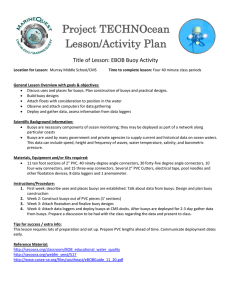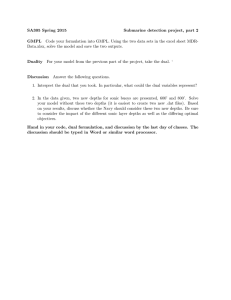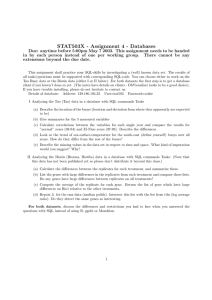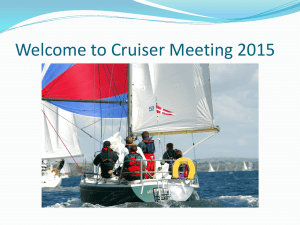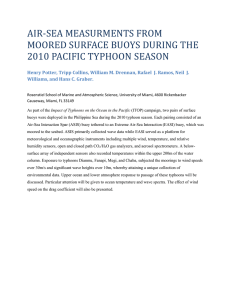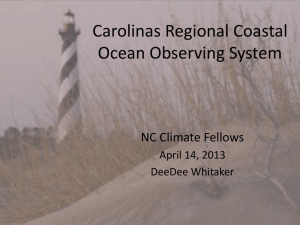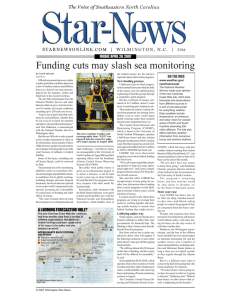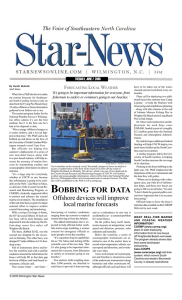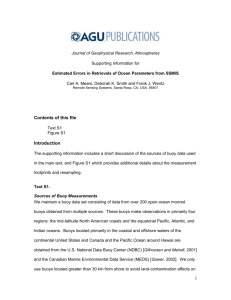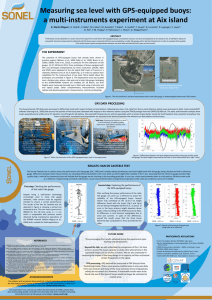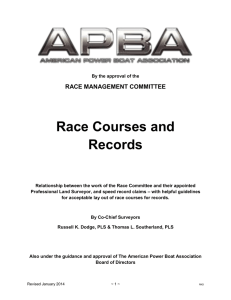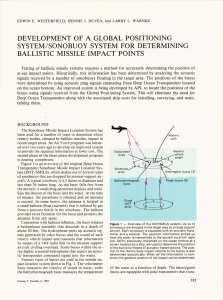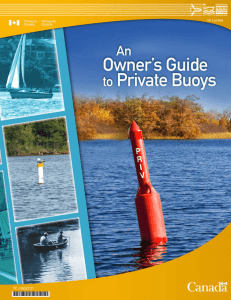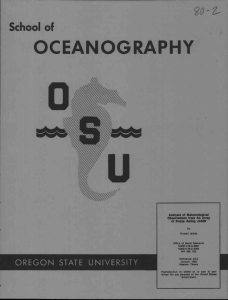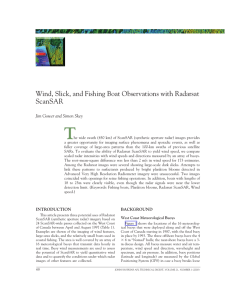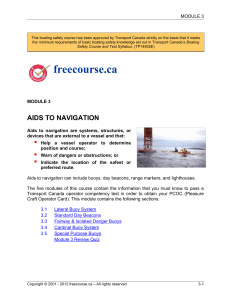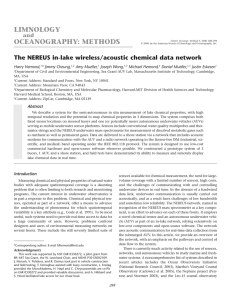HOMEWORK 1
advertisement
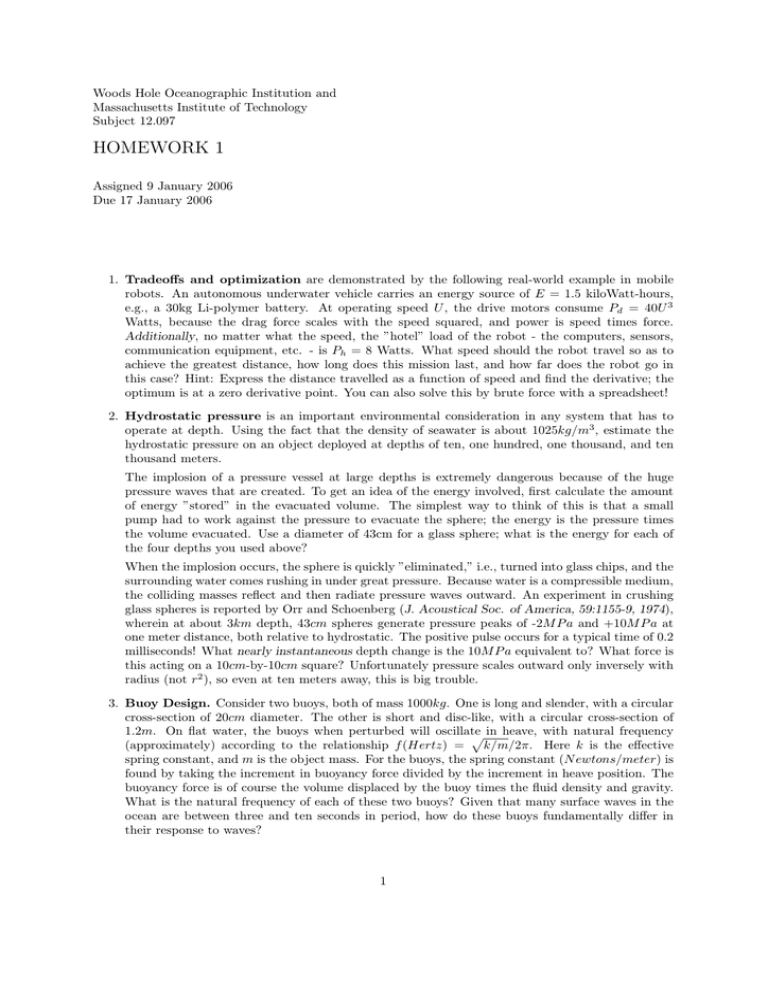
Woods Hole Oceanographic Institution and Massachusetts Institute of Technology Subject 12.097 HOMEWORK 1 Assigned 9 January 2006 Due 17 January 2006 1. Tradeoffs and optimization are demonstrated by the following real-world example in mobile robots. An autonomous underwater vehicle carries an energy source of E = 1.5 kiloWatt-hours, e.g., a 30kg Li-polymer battery. At operating speed U , the drive motors consume Pd = 40U 3 Watts, because the drag force scales with the speed squared, and power is speed times force. Additionally, no matter what the speed, the ”hotel” load of the robot - the computers, sensors, communication equipment, etc. - is Ph = 8 Watts. What speed should the robot travel so as to achieve the greatest distance, how long does this mission last, and how far does the robot go in this case? Hint: Express the distance travelled as a function of speed and find the derivative; the optimum is at a zero derivative point. You can also solve this by brute force with a spreadsheet! 2. Hydrostatic pressure is an important environmental consideration in any system that has to operate at depth. Using the fact that the density of seawater is about 1025kg/m3 , estimate the hydrostatic pressure on an object deployed at depths of ten, one hundred, one thousand, and ten thousand meters. The implosion of a pressure vessel at large depths is extremely dangerous because of the huge pressure waves that are created. To get an idea of the energy involved, first calculate the amount of energy ”stored” in the evacuated volume. The simplest way to think of this is that a small pump had to work against the pressure to evacuate the sphere; the energy is the pressure times the volume evacuated. Use a diameter of 43cm for a glass sphere; what is the energy for each of the four depths you used above? When the implosion occurs, the sphere is quickly ”eliminated,” i.e., turned into glass chips, and the surrounding water comes rushing in under great pressure. Because water is a compressible medium, the colliding masses reflect and then radiate pressure waves outward. An experiment in crushing glass spheres is reported by Orr and Schoenberg (J. Acoustical Soc. of America, 59:1155-9, 1974), wherein at about 3km depth, 43cm spheres generate pressure peaks of -2M P a and +10M P a at one meter distance, both relative to hydrostatic. The positive pulse occurs for a typical time of 0.2 milliseconds! What nearly instantaneous depth change is the 10M P a equivalent to? What force is this acting on a 10cm-by-10cm square? Unfortunately pressure scales outward only inversely with radius (not r2 ), so even at ten meters away, this is big trouble. 3. Buoy Design. Consider two buoys, both of mass 1000kg. One is long and slender, with a circular cross-section of 20cm diameter. The other is short and disc-like, with a circular cross-section of 1.2m. On flat water, the buoys when perturbed will oscillate � in heave, with natural frequency (approximately) according to the relationship f (Hertz) = k/m/2π. Here k is the effective spring constant, and m is the object mass. For the buoys, the spring constant (N ewtons/meter) is found by taking the increment in buoyancy force divided by the increment in heave position. The buoyancy force is of course the volume displaced by the buoy times the fluid density and gravity. What is the natural frequency of each of these two buoys? Given that many surface waves in the ocean are between three and ten seconds in period, how do these buoys fundamentally differ in their response to waves? 1
